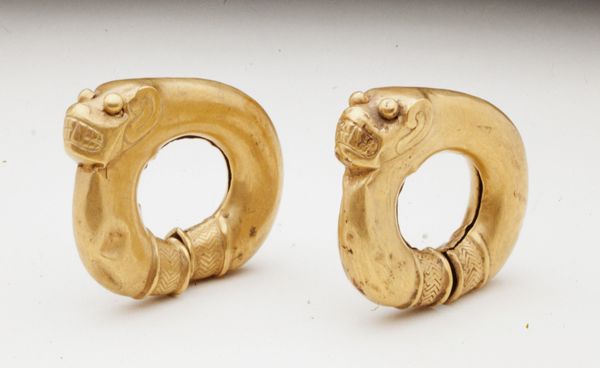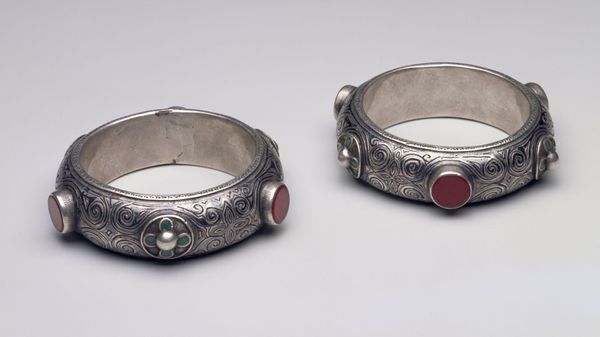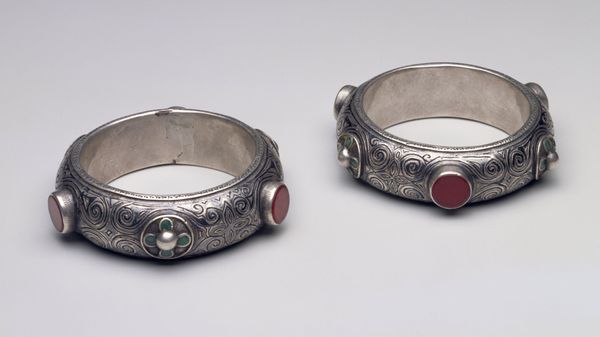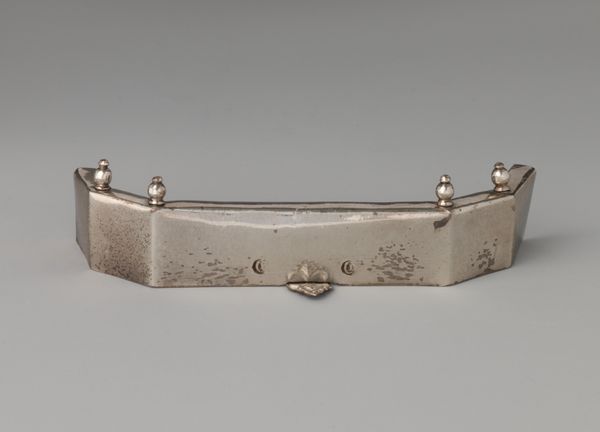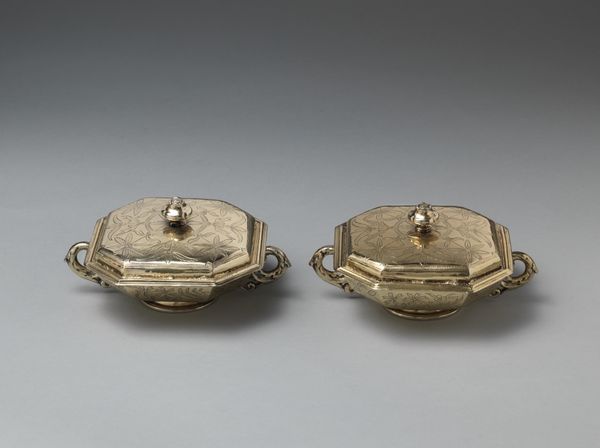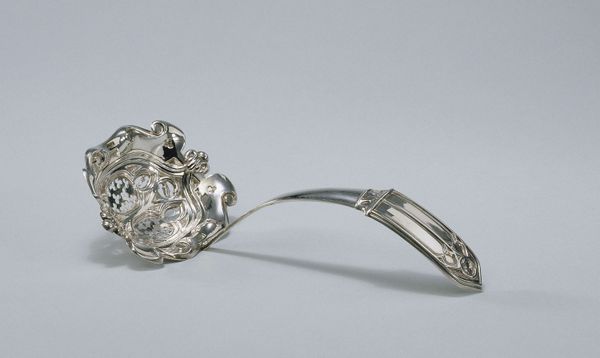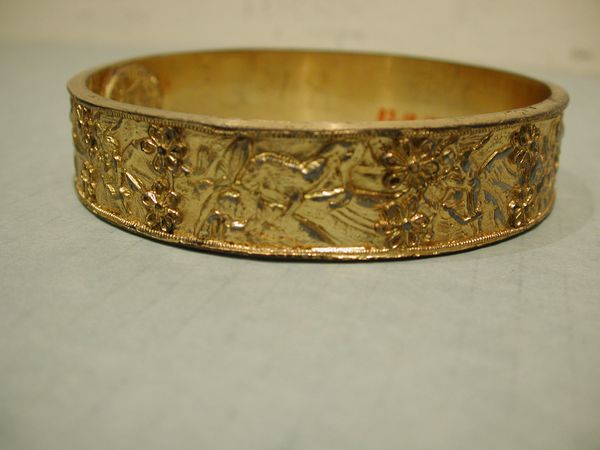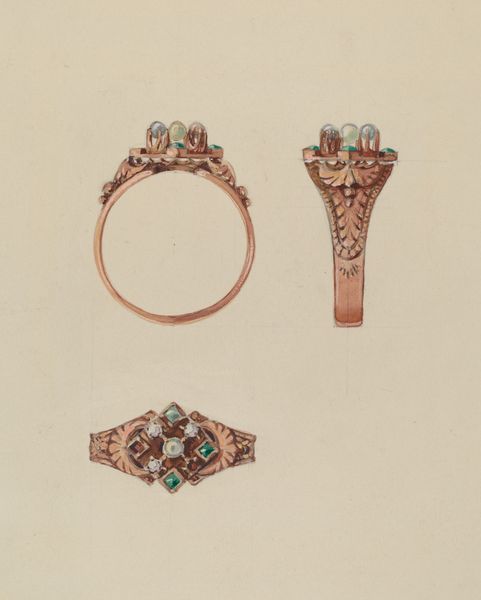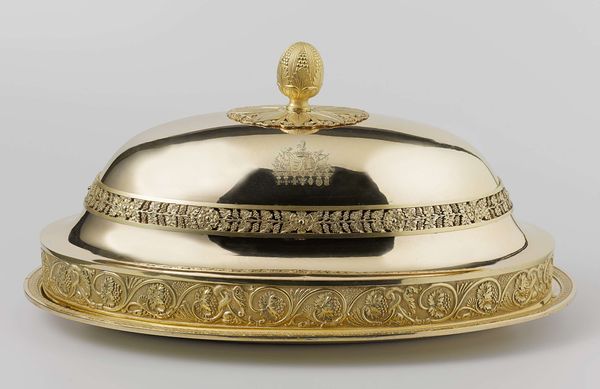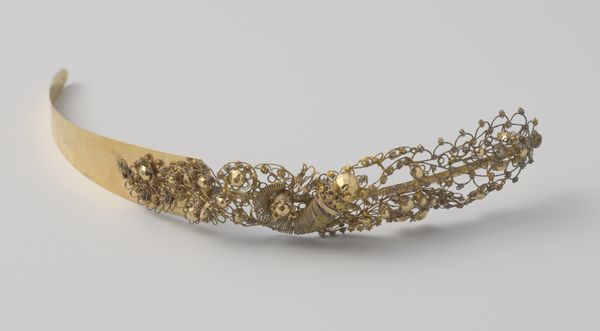
metal, gold, sculpture, enamel
#
medieval
#
baroque
#
metal
#
gold
#
form
#
sculpture
#
enamel
#
abstraction
#
jewelry
#
armor
#
decorative-art
#
erotic-art
Dimensions: H. of each 7 1/2 in. (1.9 cm); L. of each 5 7/10 in. (1.45 cm); Wt. of each 1 lb. 10 oz. (750 g)
Copyright: Public Domain
Curator: Looking at these "Pair of Stirrups," dating from 1625 to 1700, you immediately sense the labor and prestige associated with their creation. The gold, combined with the intricate enamel work, speaks volumes about power. What strikes you first about these? Editor: It's the juxtaposition of their delicate ornamentation with their rugged purpose. There's something jarring about encasing something functional in such artistry, but I think that tension is very intriguing. Curator: Absolutely. These weren't made for mere transportation, they signal an identity steeped in patriarchal structures and colonial power. Consider the expense and skill needed to combine gold and enamel in such an intricate manner. This labor becomes a crucial part of our interpretation, does it not? How the exploitation of resources and workers enabled such displays of status. Editor: Indeed. The means of production are crucial here. Who mined the gold? Who were the artisans meticulously applying enamel? The material richness distracts from the historical realities of acquisition. What narratives about craftsmanship are interwoven here? I want to delve deeper into who was involved in crafting them. Curator: This raises important questions about value. Gold has always been bound to socioeconomic status, as well as symbolic weight and colonial exploits. The stirrups become emblems of not just wealth, but systems of dominance. Editor: Agreed, and looking closely at the style, do we know who made them? Is there a particular technique that suggests something about workshop production and skill? Curator: While the specific artisans might remain unknown, we see elements of baroque aesthetics – elaborate detail and ornamentation. Consider them through intersectional lenses. It allows a critical examination of gender, race, and class in their historic uses. Editor: And even their obsolescence! How did these ornate pieces move from practical object to display of prestige to museum artefact? Curator: Ultimately, objects such as these force us to confront our complex relationship with material culture and its entanglements with inequality. Editor: Precisely, prompting us to dissect not just the “what” but, more crucially, the “how” and the “why” of its existence, labor, and social impact.
Comments
No comments
Be the first to comment and join the conversation on the ultimate creative platform.
